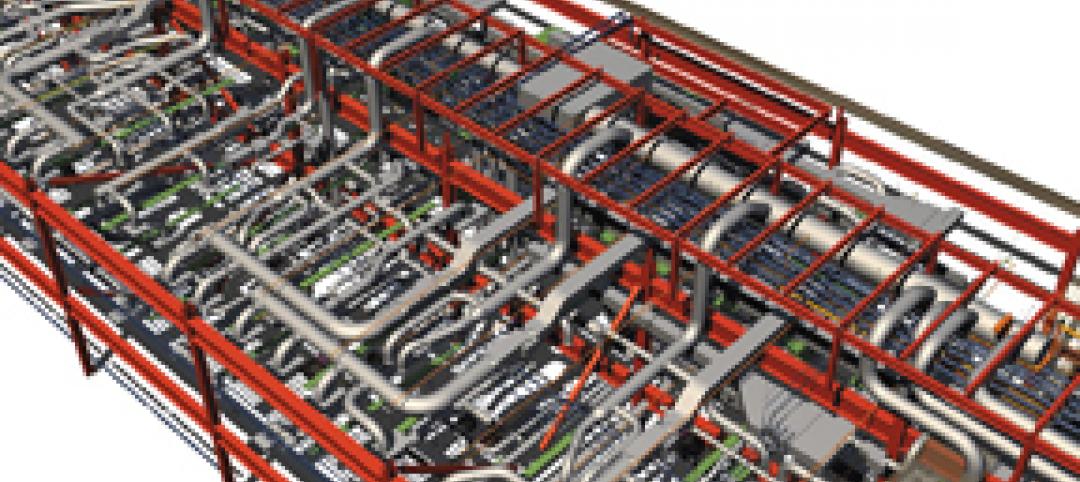American Chemistry Council (ACC) is touting projections in a new report by the International Council of Chemical Associations (ICCA) showing that combining building efficiency improvements-made possible by innovations in chemistry–with lower-carbon fuels could lead to a 41 percent reduction in energy use and a 70& reduction in greenhouse gas emissions by 2050.
Of all the energy used in the U.S., nearly one-third is consumed by the building sector. Improving efficiency is critical, and during the next few decades the amount of energy used by the building sector will increase dramatically (more than 62% by 2050), as will the amount of CO? emissions (more than 87% by 2050), according to the ICCA report.
“The ICCA projections reinforce what we have known for long time – that the chemical industry is an indispensable provider of solutions that improve the energy efficiency of buildings,” said Cal Dooley, president and CEO of the American Chemistry Council. “Nearly every energy-efficient technology is dependent on innovations made possible by chemistry. Our products make the nation’s energy supplies go further while lowering energy costs for businesses and families.”
The ICCA Building Technology Roadmap, which will be officially released this week at the 18th session of the Conference of the Parties to the United Nations Framework Convention on Climate Change in Doha, Qatar, examined the chemical industry’s contributions to energy efficiency and greenhouse gas savings in residential and commercial construction. The report focused on the potential savings from five chemically derived building technologies that are commercially available today: insulation, pipe and pipe insulation, air sealing, reflective roof coatings and pigments, and windows.
According to the ICCA report, energy-saving products installed in homes in the U.S. prevented nearly 283 million tons of CO? emissions in 2010–equivalent to the greenhouse gas emissions of 50 million passenger vehicles. Studies show that if this trend continues, more than 7 billion tons of emissions can be avoided by 2050 in the U.S. alone–equivalent to the CO? emissions of more than 1.2 billion passenger vehicles.
Averaging at least 75% of the heat loss in households, single-family homes provide most of the potential for energy savings within the residential sector. In 2010, the cumulative energy savings from chemically derived building products in U.S. residential buildings was 46 times greater than the energy required to produce the products. +
Related Stories
| Jan 3, 2013
5 things you should know about decorative concrete
Designing and installing decorative concrete is a lot more difficult that you might think. A veteran of many such installations offers a handful of tips to help you plan your next decorative concrete project.
| Jan 2, 2013
Trends Report: New facilities enhance the quality of campus life
Colleges and universities are building state-of-the-art student unions, dining halls, and other non-academic buildings to enrich the campus experience, boost enrollment, and stay competitive.
| Jan 2, 2013
Global data center market to ‘slow’ to 14.3% this year
Total global investment in data centers is expected to slow down somewhat this year but still increase at a respectable 14.3%, according to DCD Intelligence.
| Jan 2, 2013
BIM market value to hit $6.5 billion by 2020
Sales of BIM software and services are expected to grow at a compound annual rate of 17.3%, to a market value of $6.5 billion in 2020.
| Jan 2, 2013
Construction jobs made gains in 2012, even with a slow Q4, says Gilbane report
The construction sector in the nine states with 50% of construction employment was up 169,000 jobs from February to September 2012, following a lost of 137,000 jobs from September 2011 to January 2012.
| Dec 17, 2012
Steel Stud Manufacturers Association donates $100,000 to industry research
SSMA is co-funding projects identified to be critical by the industry including research on fire rated intersections, clip-angle connections, blast resistant cold-formed steel framed walls, adoption of cold- formed steel framing in ASCE 41 and establishing cold-formed steel framing’s sustainability message.














